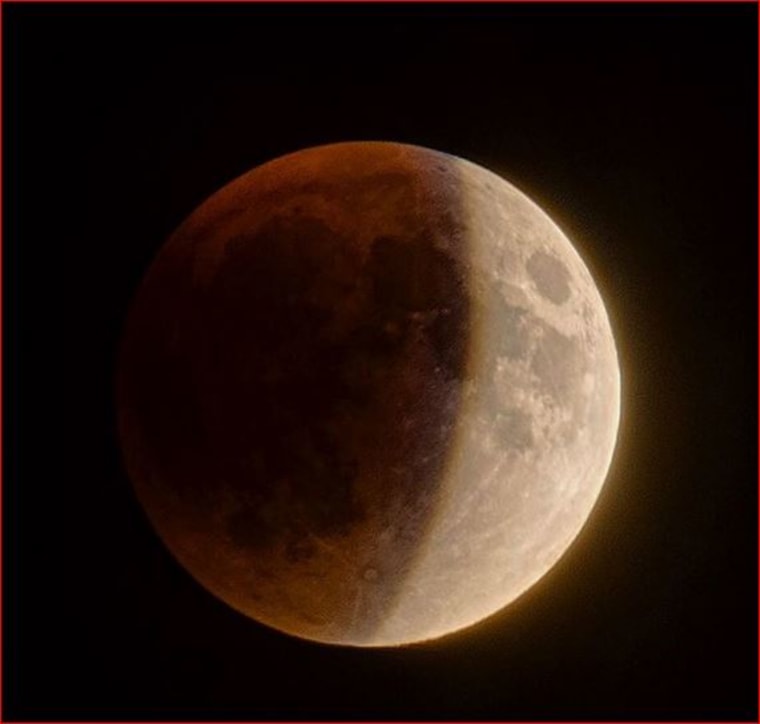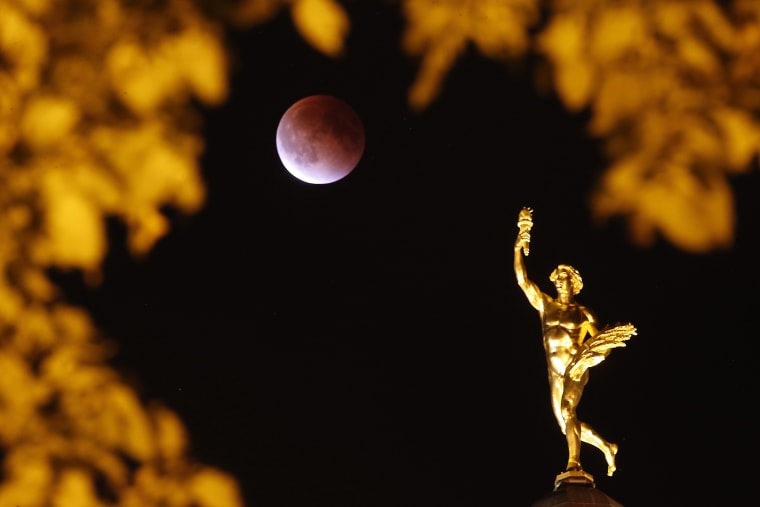Skywatchers had something to howl about on Sunday: a supermoon total eclipse. Not only was it the best and last opportunity of the year for Americans to witness any kind of eclipse, but this particular phenomenon is extremely rare, happening perhaps five times a century. The last supermoon eclipse was in 1982, and there won't be another until 2033.

Beginning at 8:11 p.m. Eastern (5:11 p.m. Pacific), the moon — currently full and at the closest point in its orbit, making it an extra-large, extra-bright "supermoon" — entered the shadow of the Earth, darkening it until only light refracted around the planet falls on its surface. The redness of this light gives the moon a rusty color, resulting in the nickname of this type of eclipse: a "blood moon."
The total lunar eclipse, in which the moon is completely engulfed in the center of the Earth's shadow, or umbra, began two hours later, lasting for a little more than an hour before things brightened up again.
In Los Angeles, a large crowd filled the lawn of Griffith Observatory to watch the celestial show while listening to Beethoven's "Moonlight Sonata" played by 14-year-old pianist Ray Ushikubo.
"You always want to see the eclipse because they're always very different," said astronomer Edwin Krupp, the director of the hilltop landmark.

